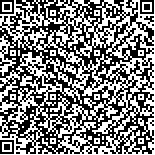| 本文已被:浏览 410次 下载 1030次 |

码上扫一扫! |
|
|
| 渤海溶解CH4分布和通量的季节变化及其影响因素 |
|
孙悦1,2, 罗畅1,2, 杜冠祥1,2, 王浩男1,2, 宋国栋1,2, 刘素美1,2, 张桂玲1,2
|
|
1.中国海洋大学 深海圈层与地球系统前沿科学中心和海洋化学理论与工程技术教育部重点实验室 山东青岛 266100;2.青岛海洋科学与技术试点国家实验室 海洋生态与环境科学功能实验室 山东青岛 266237
|
|
| 摘要: |
| 甲烷(CH4)是影响地球辐射平衡的主要温室气体,海洋是大气CH4的自然源,而陆架等近海是释放CH4的热点海域。于2021年4月、7月和10月对渤海进行了调查,以认识其分布特征并估算其海-气交换通量。春、夏和秋季表层海水CH4浓度分别为(4.56±2.60)、(8.31±4.01)和(4.99±1.31) nmol/L,夏季明显高于春秋季。CH4的垂直分布规律为底层普遍高于表层,不同站位的垂直分布空间差异较大。渤海CH4分布主要受河流输入、油气泄漏、生物活动以及沉积物-水界面交换等因素的影响,其中黄河向渤海输入CH4约为每月1.4×104~2.8×105 mol,秋冬季沉积物-水界面CH4交换通量范围为–4.0~0.42 μmol/(m2·d),表明秋冬季沉积物既可能是渤海水体CH4的源,也可能是其汇。春、夏和秋季渤海CH4海-气交换通量分别为(1.1±2.4)、(7.5±8.8)和(3.9±5.5)μmol/(m2·d)。渤海年CH4排放通量为2.37×10–3 Tg/a,约占全球海洋释放总量的0.05%,远高于其面积占比0.02%,是大气CH4的净源。该文系统探讨了渤海CH4的分布特征及其影响因素,为深入认识近岸海域对全球海洋CH4释放的贡献提供了科学依据。 |
| 关键词: 渤海 甲烷 海-气交换通量 河流输入 油气泄漏 生物影响 |
| DOI:10.11693/hyhz20220600173 |
| 分类号:P734 |
| 基金项目:国家自然科学基金联合基金项目,U1806211号;国家自然科学基金面上项目,42176044号。 |
|
| DISTRIBUTION AND FLUX OF DISSOLVED CH4 IN BOHAI SEA AND THE INFLUENCING FACTORS |
|
SUN Yue1,2, LUO Chang1,2, DU Guan-Xiang1,2, WANG Hao-Nan1,2, SONG Guo-Dong1,2, LIU Su-Mei1,2, ZHANG Gui-Ling1,2
|
|
1.Frontiers Science Center for Deep Ocean Multispheres and Earth System, Key Laboratory of Marine Chemistry Theory and Technology, Ministry of Education, Ocean University of China, Qingdao 266100, China;2.Laboratory for Marine Ecology and Environmental Science, Pilot National Laboratory for Marine Science and Technology (Qingdao), Qingdao 266237, China
|
| Abstract: |
| Methane (CH4) is a major greenhouse gas that affects the Earth's radiation balance. The ocean is the natural source of atmospheric CH4, and the coastal waters including continental shelf are the main areas of CH4 release. To clarify the distribution characteristics and estimate its air-sea flux in the Bohai Sea in spring, summer and autumn, surveys were conducted in April, July, and October 2021 in the Bohai Sea. Results show that the CH4 concentration in the surface seawater was (4.56±2.60), (8.31±4.01) and (4.99±1.31) nmol/L in the three month respectively, of which the summer time had obviously higher value than those of the spring and autumn. CH4in bottom water was generally higher than that in the surface, and the depth profile of CH4 showed great spatial heterogeneity. The CH4 distribution was mainly influenced by river input, oil and gas leakage, biological activities, and sediment-water exchange. The input of CH4 from the Huanghe River to the Bohai Sea was about 1.4×104~2.8×105 mol per month, and the CH4 exchange flux at sediment-water interface in autumn and winter ranged from -4.0 to 0.42 μmol/(m2∙d), which indicates that the sediment can act as either a source or a sink of water column CH4. The air-sea CH4 fluxes in the Bohai Sea in spring, summer, and autumn were (1.1±2.4), (7.5±8.8), and (3.9±5.5) μmol/(m2∙d), respectvely. The total CH4 emission in the Bohai Sea was estimated to be 2.37×10-3 Tg/a, accounting for about 0.05% of the global oceanic emission in area percentage of 0.02%. Therefore, the Bohai Sea is the net source of atmospheric CH4. This study provided a scientific basis for in-depth understanding of the contribution of coastal waters to the global oceanic emission of CH4. |
| Key words: Bohai Sea methane air-sea flux riverine input oil and gas leakage biological activities |
